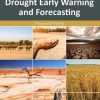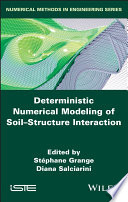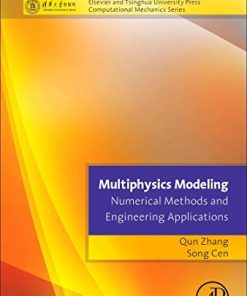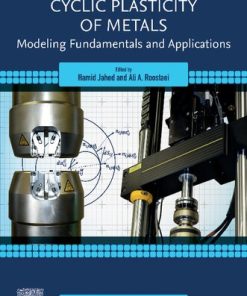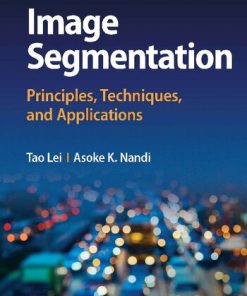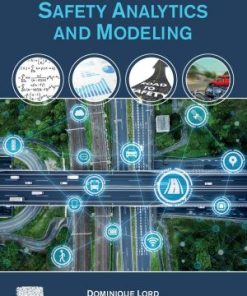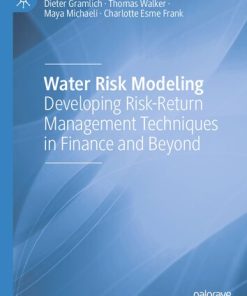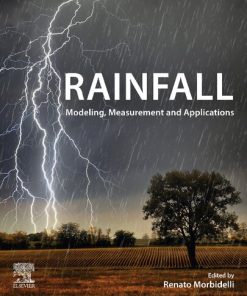Peridynamic Modeling Numerical Techniques and Applications 1st edition by Erkan Oterkus 0128204419 9780128204412
$50.00 Original price was: $50.00.$25.00Current price is: $25.00.
Peridynamic Modeling, Numerical Techniques, and Applications 1st edition by Erkan Oterkus – Ebook PDF Instant Download/DeliveryISBN: 0128204419, 9780128204412
Full download Peridynamic Modeling, Numerical Techniques, and Applications 1st edition after payment.
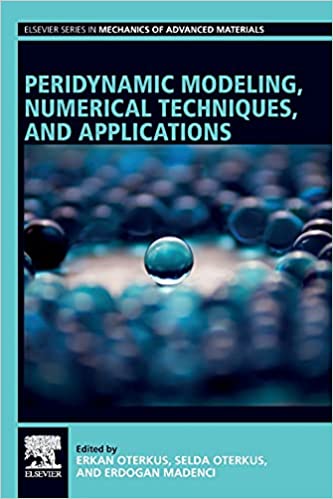
Product details:
ISBN-10 : 0128204419
ISBN-13 : 9780128204412
Author : Erkan Oterkus
This book provides readers with an incisive look at cutting-edge peridynamic modeling methods, numerical techniques, their applications, and potential future directions for the field. It starts with an introductory chapter authored by Stewart Silling, who originally developed peridynamics. It then looks at new concepts in the field, with chapters covering dual-horizon peridynamics, peridynamics for axisymmetric analysis, beam and plate models in peridynamics, coupled peridynamics and XFEM, peridynamics for dynamic fracture modeling, and more. From there, it segues into coverage of cutting-edge applications of peridynamics, exploring its biological applications, modeling at the nanoscale, peridynamics for composites delamination and damage in ceramics, and more, concluding with a chapter on the application of artificial intelligence and machine learning in peridynamics.
Peridynamic Modeling, Numerical Techniques, and Applications 1st Table of contents:
Chapter 1. Introduction
1. What is peridynamics?
2. Peridynamics obtained from the smoothing of an atomic system
3. Material models
4. Relation to the local theory
5. Simple meshless discretization
6. Some research trends in the peridynamic theory
7. Conclusions
Section I. New concepts in peridynamics
Chapter 2. Dual-horizon peridynamics (DH-PD)
1. Introduction
2. Ghost force in traditional peridynamics
3. Dual-horizon concept
4. Forces in dual-horizon peridynamics
5. Equation of motion in dual-horizon peridynamics
6. Test of spurious wave
7. Adaptivity and particles arrangement sensitivity
8. Weak continuity along the materials interfaces
9. Conclusion and discussion
Chapter 3. Peridynamics for axisymmetric analysis
1. Introduction
2. Classical axisymmetric equilibrium equations
3. Peridynamic theory
4. Weak form of PD equation of motion
5. Failure criteria
6. Numerical results
7. Conclusions
Chapter 4. Peridynamics damage model through phase field theory
1. Introduction
2. Phase field theory: A brief recap
3. PD reformulation of phase field theory
4. Criterion for bond breaking
5. Numerical illustrations
6. Concluding remarks
Chapter 5. Beam and plate models in peridynamics
1. Introduction
2. Peridynamic Timoshenko beam formulation
3. Peridynamic Mindlin plate formulation
4. Numerical results
5. Conclusions
Chapter 6. Coupling of CCM and PD in a meshless way
1. Introduction
2. The splice method, at a continuum level
3. A meshless discretisation of CCM: the finite point method
4. A meshless discretisation of PD
5. Details on the discretised version of the coupling
6. Numerical examples
7. Conclusions
Chapter 7. Coupled peridynamics and XFEM
1. Introduction
2. Peridynamic differential operator
3. XFEM in conjunction with peridynamics
4. Activation of enrichment functions
5. Numerical results
6. Conclusions
Chapter 8. Peridynamics in dynamic fracture modeling
1. Introduction
2. Ordinary state-based peridynamics
3. Fracture modeling
4. Evaluation of mixed-mode DSIFs for stationary cracks
5. Dynamic crack propagation and arrest modeling
6. Concluding remarks
Chapter 9. Contact analysis of rigid and deformable bodies with peridynamics
1. Introduction
2. Approach
3. Contact model between the impactor and target
4. Numerical results
5. Conclusions
Chapter 10. Modeling inelasticity in peridynamics
1. Introduction
2. Peridynamic plasticity formulation
3. Peridynamic viscoelasticity formulation
4. Numerical results
5. Conclusions
Chapter 11. Kinematically exact peridynamics
1. Introduction
2. Kinematics
3. Governing equations
4. Computational implementation
5. Harmonic potentials
6. Examples
7. Conclusion
Section II. New applications in peridynamics
Chapter 12. Modeling biological materials with peridynamics
1. Introduction
2. Methodology
3. Example applications
4. Conclusion and outlook
Chapter 13. The application of peridynamics for ice modeling
1. Introduction
2. Numerical study of mechanical properties of ice
3. Numerical simulation of interaction between level ice and sloping structure
4. Research on numerical simulation of ice breaking by underwater explosion based on BBPD method
5. Numerical simulation of continuous icebreaking based on hybrid modeling method
Chapter 14. Fiber-reinforced composites modeling using peridynamics
1. Introduction
2. Peridynamics for composite materials
3. Numerical examples
4. Conclusions and future outlook
Chapter 15. Phase field–based peridynamics damage model: Applications to delamination of composite structures and inelastic response of ceramics
1. Introduction
2. Review of cohesive zone model (CZM) and Deshpande-Evans (DE) model
3. Phase field–based PD damage model for composites delamination
4. Numerical illustrations on composites delamination
5. DE damage model using phase field–based PD
6. Numerical illustrations
7. Concluding remarks
Chapter 16. Peridynamic modeling at nano-scale
1. Introduction
2. PD model for the failure of SLGS
3. PD simulation of the failure of SLGS
4. Conclusion
Chapter 17. Multiscale modeling with peridynamics
1. Introduction
2. Coarsening approach
3. Model order reduction using static condensation
4. Homogenization approach
5. Conclusions
Chapter 18. Application of peridynamics for rock mechanics and porous media
1. Introduction
2. Fully coupled poroelastic peridynamic formulation
3. Numerical implementation
4. Numerical results
5. Conclusions
Chapter 19. Application of high-performance computing for peridynamics
1. Introduction
2. Parallel programming of a PD code
3. Numerical results
4. Conclusions
Chapter 20. Application of artificial intelligence and machine learning in peridynamics
People also search for Peridynamic Modeling, Numerical Techniques, and Applications 1st:
what is numerical modelling
numerical modelling jobs
numerical methods software
what is numerical method
peridynamic modeling of frictional contact
Tags: Peridynamic Modeling, Numerical Techniques, Applications, Erkan Oterkus
You may also like…
Engineering - Civil & Structural Engineering
Deterministic Numerical Modeling of Soil Structure Interaction 1st Edition
Technique - Materials
Cyclic Plasticity of Metals: Modeling Fundamentals and Applications 1st Edition
Computers - Applications & Software
Engineering
Computers - Computer Graphics & Design
Image Segmentation: Principles, Techniques, and Applications Tao Lei 111985900X 9781119859000
Jurisprudence & Law
Business & Economics
Water Risk Modeling: Developing Risk-Return Management Techniques in Finance and Beyond 1st edition
Uncategorized
Rainfall: Modeling, Measurement and Applications 1st Edition Renato Morbidelli (Editor)



